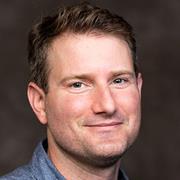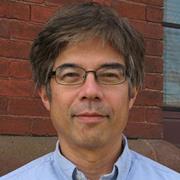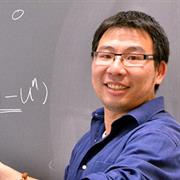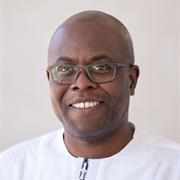Analysis and PDEs
The Analysis cluster at Tufts includes a range of specialties that cross over between pure and applied math, with common interests in harmonic analysis, PDEs, and integral geometry.
Harmonic analysis is an abstract generalization of Fourier theory that includes the study of Laplacians and their spectra on manifolds and in many other geometric settings. Partial differential equations (PDEs) are omnipresent in applications of mathematics to physics, from the time of Fourier and Maxwell onwards. Integral geometry is the study of integral transforms that integrate functions over curves or surfaces in Euclidean space or manifolds.
Fulton Gonzalez works in harmonic analysis on homogeneous spaces and in integral geometry, using tools from representation theory, functional analysis, differential geometry, and algebraic geometry. Todd Quinto's pure research involves the use of microlocal analysis in integral geometry, with applications to harmonic analysis and PDEs. Bruce Boghosian studies periodic solutions to PDEs that exhibit spatiotemporal chaos, such as the Kuramoto-Sivashinsky equations that govern the dynamics of flame fronts. James Adler's research uses tools from numerical analysis (including finite elements) for studying the solution of PDEs. Xiaozhe Hu's research studies the qualitative properties of PDEs such as stability and well-posedness for developing efficient and robust numerical methods. James Murphy uses methods from harmonic analysis, spectral graph theory, and high-dimensional statistics for theoretical machine learning.







